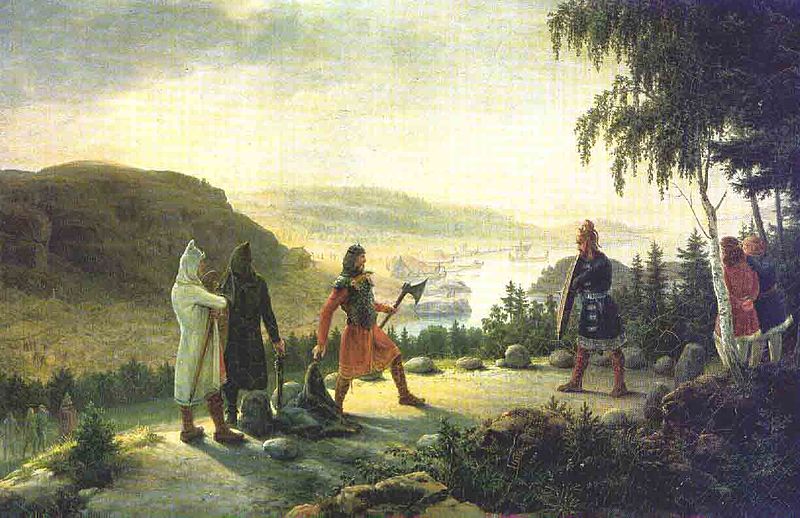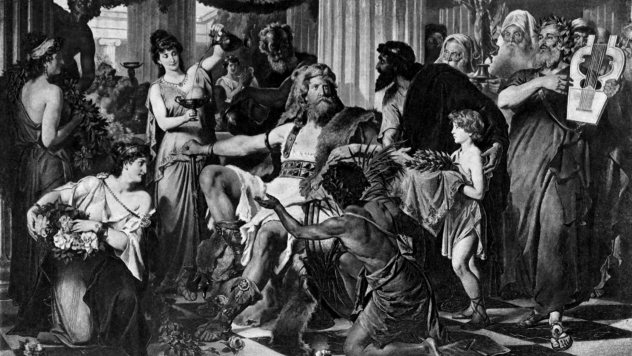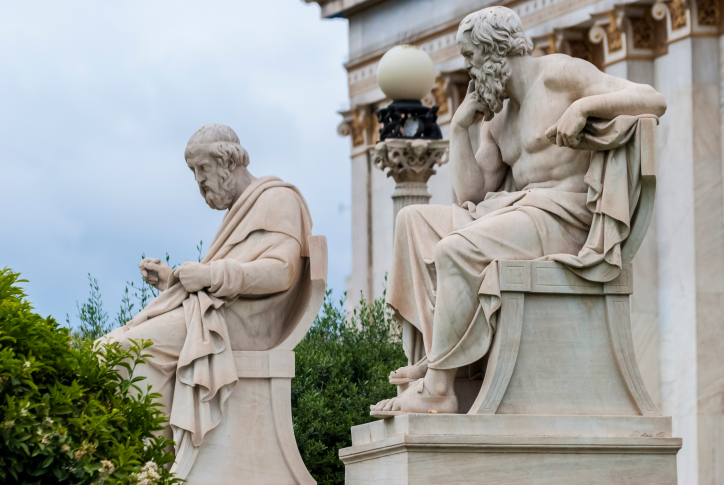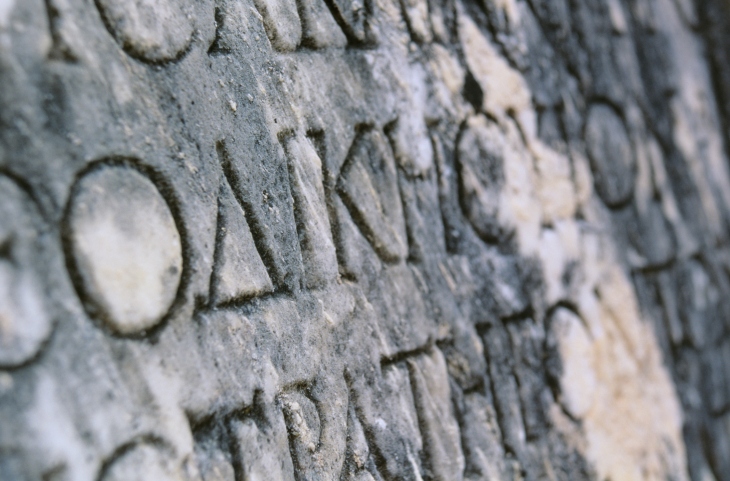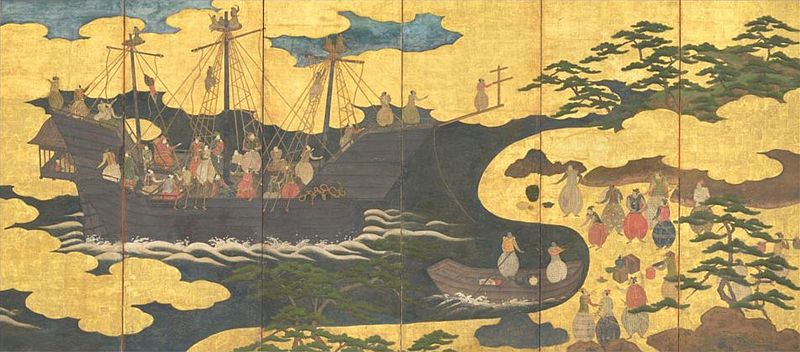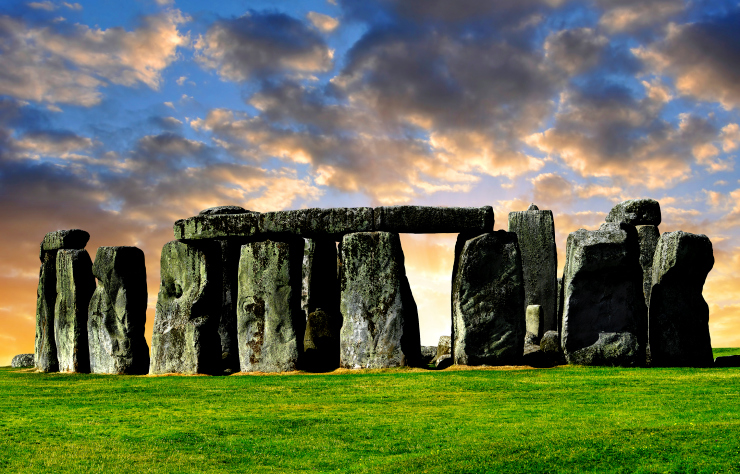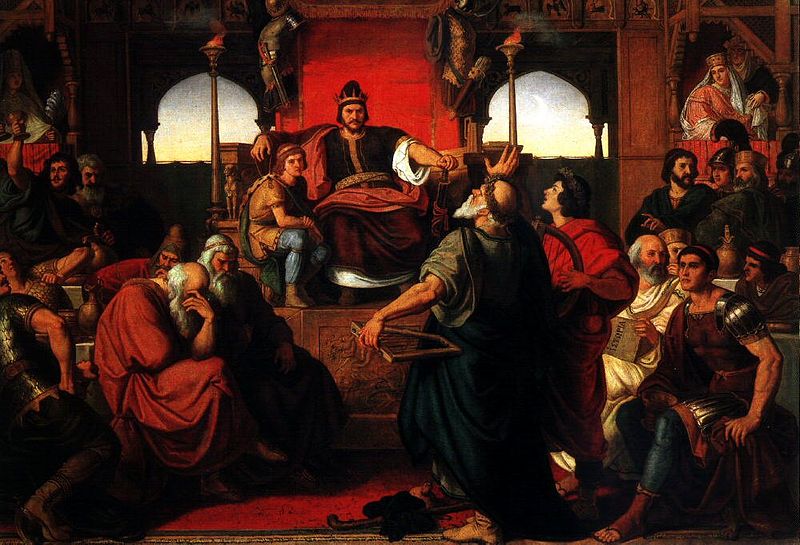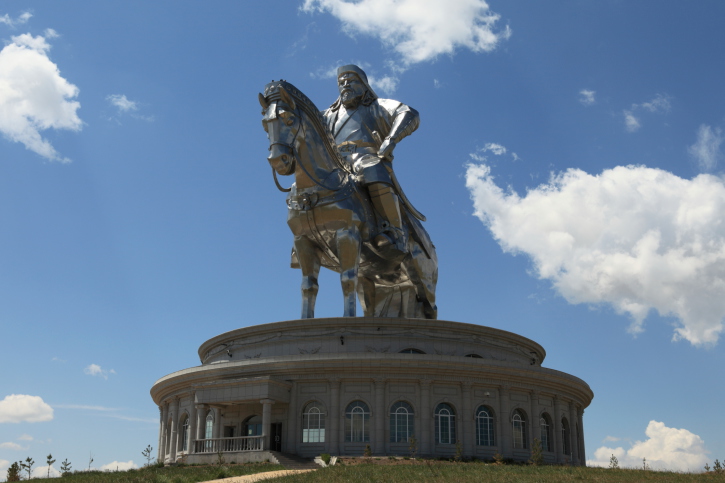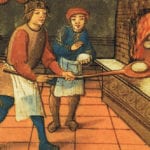We’ve mentioned before how the term itself came from the ancient Greeks, who dismissed foreign languages as sounding like “bar bar bar.” A relentlessly xenophobic society, the Greeks believed that people were either Greek or barbarian. Later, the term came to designate any tribe or nation that did not conform to certain codes and customs. From Rome to China, humanity has long tried to vilify and degrade people who were in some way different.
10The Vikings Were Cleanliness Fanatics
For a long time, the popular view of the Vikings was as a vile, ruthless group who murdered their way across Europe, reeking of filth and cruelty. Well, as it turns out, the “filthy” Vikings were actually more concerned about hygiene than most Europeans of their age. For one thing, they bathed regularly—a rarity at the time. They made elaborately decorated combs and other grooming items, and many Vikings bleached their hair blond to conform to certain cultural ideals of beauty. They even designated Saturday, or “Iaugardagur” as a “day for washing.” Norse settlements in Iceland actually had a law which called for the most severe punishments for offenders who intentionally made someone dirty as a means of disgracing them.
9Rome Actually Flourished Under The Goths
History books tell us of “The Glory of Rome” and how it was brought to an end by either the Visigoths sacking Rome in A.D. 410, the Vandals sacking Rome in A.D. 455, or Odoacer deposing the Western Emperor in A.D. 476. In truth, Rome pretty much survived. Roman culture, traditions, practices, laws, and even political structure (the Senate) were left at least partially intact. Under the rule of the Ostrogoths, particularly Theodoric the Great, the city flourished. The Ostrogoths were formerly pagan, but converted to Arianism (a heretical Christian sect). Still, people were actually open and tolerant of these differences and Arian Goths lived peacefully with other Christians and Jews. Roman arts and literature were fully embraced. But nothing good lasts forever. Thanks to their pagan roots, the Ostrogoths believed that Theodoric’s dynasty, the Amals, were of a sacred bloodline descended from the gods themselves. When Theodoric’s grandson, Athalaric, died young, the Gothic Kingdom fragmented. The Eastern Roman Empire, which espoused traditional Christian beliefs, hated the idea of the heretical Ostrogoths ruling over Rome. The Emperor Justinian also had his eyes set on reclaiming the Western Roman Empire. In A.D. 535, Justinian sent his best general, Belisarius, to retake Italy. The campaign lasted decades and served only to depopulate much of the peninsula. Eventually, a new wave of invaders, the Lombards, easily took control. So it was that the ambitions of the Eastern Roman Empire served as the death knell of its Western counterpart.
8The Greeks Considered Even Their Relatives Barbarians
We’ve discussed how the Greeks coined the term “barbarian” in reference to foreigners. Oddly enough, they also referred to their own neighbors and kinsmen in the same manner, either as an insult or simply because they found their dialect too confusing. For instance, when Stratonicus, a harp player from Athens, was asked who the greatest barbarians were, the famous musician nonchalantly replied: “the Eleans.” Were the Eleans from faraway lands like Persia or Africa? Nope, they lived in Elis, in the Peloponnese, where the first Olympic Games were held. Even the prominent orator and statesman Demosthenes denounced Philip II of Macedonia, Alexander the Great’s father, as a barbarian, since “he not only isn’t a Greek and is quite unrelated to Greeks: he isn’t even a barbarian from a respectable place, but a miserable Macedonian!”
7The Greeks Actually Borrowed A Lot From Barbarians
The Mycenaean Civilization flourished in Greece during the Bronze Age. Their system of writing is known today as “Linear B.” It followed an even older writing system known as “Linear A,” which was developed by the Minoans, an ancient civilization which prospered on the island of Crete. The Mycenaeans, known as “first true Greeks,” actually borrowed heavily from the Minoans in culture, art, and language. Centuries later, the Greeks ended up borrowing the Phoenician alphabet. Historians differ as to whether the Greeks started borrowing from the seafaring Phoenicians during the ninth century B.C., or as early as the 12th century. As for numbers, Greek mathematicians such as Archimedes and Euclid have gained eternal fame. But it seems that the Greek system of numbering was borrowed as well. Recent evidence shows a striking similarity between Greek alphabetic numerals and Egyptian demotic numerals. Dr. Stephen Chrisomalis has suggested that trade between the civilizations led the Greeks to realize that the Egyptian system was superior, leading them to partially adopt it around 600 B.C. Yes, for all the disdain the Greeks had for “barbarians,” it seems they and their ancestors were more than happy to adopt their ideas.
6The Origins Of Chinese Ethnocentricity
Many people are quick to assume that Chinese ethnocentrism, or rather xenophobia, may have come from recent history. It would be easy to note how Communism divided East and West, or how the Boxer Rebellion at the turn of the 20th century sparked anti-Western sentiments. However, it’s worth noting that these perceptions have been ingrained in Chinese culture for thousands of years. Such beliefs can be traced all the way back to the Zhou Dynasty (1046–256 B.C.), which made a clear distinction between the traditional Chinese subjects of the Zhou and those outside its borders. In many ancient texts, non-Chinese are described as part animal, akin to “birds and beasts.” Confucius also reportedly said that “the barbarians with a ruler are not as good as the Chinese without one.” Mencius criticized a scholar for adopting the ways of a foreign teacher, telling him: “I’ve heard of using what is Chinese to change what is barbarian, but I’ve never heard of using what is barbarian to change what is Chinese.” A slightly contrasting neo-Confucian view argued that the Zhou should peacefully assimilate these foreign cultures and raise them to an equal status. In this view, “no matter where under Heaven or on Earth, if a man possesses ritual and righteousness, he is a part of the Middle Kingdom.”
5Japanese Views On Foreigners
Japan is a nation which has a near-homogeneous society—98.5 percent of its residents are ethnic Japanese. When the Portuguese sailed up to Tanegashima Island in Southern Japan in 1543, the locals were astonished at the oddity before them. A later account described how the newcomers “eat with their fingers instead of chopsticks. They show their feelings without self-control. They cannot understand the meaning of written characters. They are a harmless sort of people.” This culture clash led to Westerners being labeled “Nanban,” literally “Southern Barbarians” (for they arrived from the south). When the Dutch arrived, they were still considered Nanban, but prefixed with “Komo” or “red hair”—apparently the Dutch traders were all redheads. Trade between the West and Japan continued harmoniously until Japanese isolationism closed off the island nation. It was only later, when the Meiji Restoration aimed to Westernize the country, that the term “Nanban” virtually disappeared and the Japanese began to move away from thinking of foreigners as uncivilized. There is still a common term associated with Westerners that has sparked debate in modern Japan. That word is “gaijin,” taken to mean “outsider or non-Japanese.” Some consider it neutral, but for others it has become a derogatory term—you could have lived in Japan your entire life and know all of its traditions and customs, yet still be considered an outsider.
4The Celts Were An Advanced Civilization
We’ve talked about the Celts before. However, it bears mentioning that the Celtic civilization, which was long derided and maligned by the Greeks and Romans, was perhaps more advanced and sophisticated than its counterparts. The Celtic peoples once stretched from the British Isles to the borders of Russia. Recent discoveries have revealed that Celtic ingenuity inspired the Romans—and by extension the modern world. Got a car? Well, the word itself was derived from the Celtic “karros,” for the Celts were widely famed as expert chariot-makers. The mysterious Celtic druids were apparently not only involved in mysticism, but in mathematics and geometry. Mathematical principles were adopted by the Celts, who were frequent trading partners of the Greeks, well before Rome dominated the land. Later, Roman soldiers encountered some of the “uncivilized barbarians” speaking fluent Greek. Combining their knowledge of mathematics with astronomy, the Celts created “a map of the ancient world constructed along precise celestial lines: a huge network of meridians and solar axes that served as the blueprint for the Celtic colonization of Europe.” To communicate, they devised “vocal telegraph” stations, where teams would yodel in order to relay messages across vast distances. Archaeological evidence suggests that the Celts had walled settlements where 10,000 inhabitants could live in peace, trading precious items from the farthest corners of Europe.
3Attila Wasn’t So Bad
The “Scourge of God” inspired fear and terror throughout the continent. His fits of rage were legendary, his decimation of Roman armies contributed to the Empire’s demise. But was he really as bad as we thought? Some historians have disputed Attila’s bloodthirsty acts. Was he truly a madman, or was he simply giving Roman ambassadors an awe-inspiring sight? Although long said to have killed his brother to become sole ruler of the Huns, Attila was known to have given his brother’s widow a governorship. He also doted on his son and was apparently loved by his subjects—both Huns and Romans. He had Roman scribes and subordinates who served him out of loyalty rather than fear, preferring his governance to the crippling taxes and restrictions within the more “civilized” empires. Attila was also a man of his word. True, he demanded a huge tribute from Rome to dissuade him from attacking—but he kept to this agreement and there was peace for a time. For all the talk of the riches he plundered, he reportedly lived a life of simplicity. When entertaining Roman ambassadors during a lavish banquet, Attila himself was seated on a wooden stool, his cup was wood, and his clothes and horse were unadorned. In contrast, the Roman ambassadors wore fine clothes and elaborate jewelery. He was also perhaps a romantic at heart. When Honoria, sister of the Western Roman Emperor, disliked an arranged marriage, she sought the aid of the Hunnic leader. She sent a ring to Attila, who took it as a sign of Honoria’s proposal. He also demanded half of the Empire as a dowry (the Scourge of God couldn’t simply ask for cattle). His sudden death due to a massive nosebleed on his wedding night was attributed to a lifelong struggle with the condition—he just happened to have a particularly terrible one while drunk. Either that or he was murdered. Regardless, his death resonated deeply with the Huns. They cut off their hair, gashed their faces, and wailed loudly. Attila was, by all accounts, a controversial figure whose life is still shrouded in mystery. Were all stories of him true, or were they just exaggerated by historians throughout the ages?
2We Still Use Words Named After Them
Historically, certain “barbarian” tribes have become associated with particular types of behavior—descriptions that have evolved into derogatory terms still used today. Most famously, the Vandals who sacked Rome in A.D. 455 gave rise to our modern term for a destroyer of property. When the Avars migrated into southeastern Europe in A.D. 567, they demanded tributes from the Byzantine Empire. This popularized the term “avaritia”—which eventually became “avarice.” Since the Slavic people were frequently sold as slaves, they gave rise to the modern word for slavery. Another controversial example comes from the world of medicine. For decades, the term used for people with Down syndrome was “Mongoloid.” The term was coined by Langdon Down, who believed his patients resembled Asiatic barbarians. Since that came to be considered embarrassing for everyone involved, the condition was eventually renamed after Dr. Down himself.
1The Mongols Have Rainfall To Thank For Their Conquests
Make no mistake about it, while the Mongols may have changed history, there are still a number of misconceptions about their conquests. For one, it has long been believed that a severe drought led to their expansion out of the traditional Mongolian homelands. Genghis Khan and his nomadic followers allegedly fled the deteriorating conditions, pushing in all directions just to find a place that was more habitable. However, recent studies have shown that it was no drought that led to the Mongol conquests—it was consistent heavy rainfall. For around 15 years during the early 13th century, central Mongolia suddenly had a period of abnormal moisture and warmth. This relatively temperate weather meant abundant harvests. The Mongols reaped their crops, and eventually the riches of the world, for the rain gave them limitless fuel for their horses, livestock, and warriors. Another misconception is that the Mongol armies were the exception to the rule and managed to successfully invade Russia during winter, a feat Napoleon and Hitler would fail at centuries later. But this is a faulty comparison. Napoleon’s invasion in 1812 took place during what climatologists call the “Little Ice Age,” when the northern hemisphere went from cozy to downright frigid. Hitler’s invasion in 1941 coincided with one of modern history’s most brutal winters. In contrast, the Mongols invaded during the “Medieval Warm Period,” when weather conditions were temperate. So pretty much from the onset, the Mongols had it quite a bit easier than later would-be conquerors. Jo considers himself a “barbarian” as well. He does not speak Greek, and he sometimes eats raw food (uhh, sushi counts). Go talk to him via email or just go “bar bar bar!” at the comments section.
